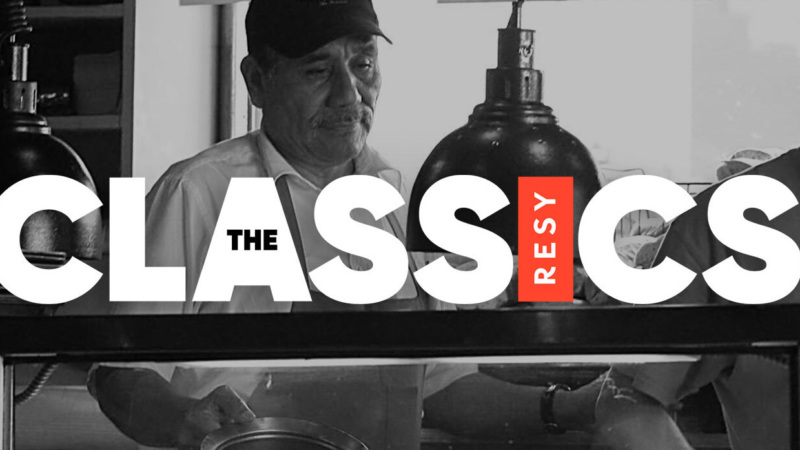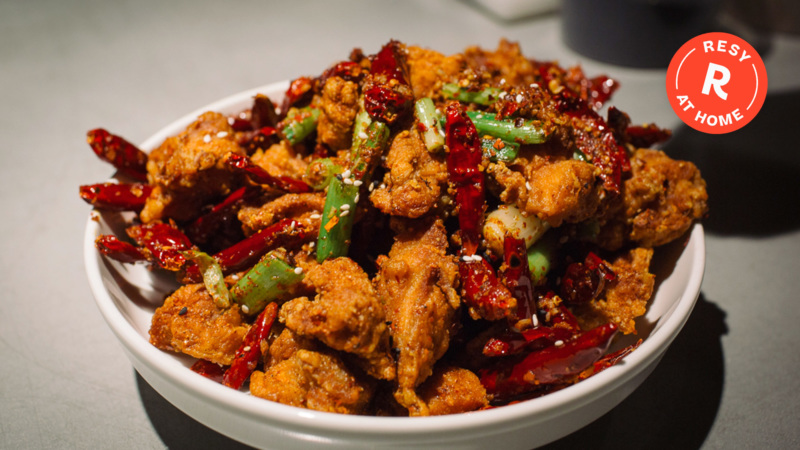

The Fort: A Classic American Western Restaurant that Savors Its Past
“Western cuisine, “edible history” and “frontier food” are terms that can be as well-worn and meaningless as an old cowboy boot with a hole in it. That began to change when Samuel P. Arnold, a Yale-educated advertising executive and American West history buff opened The Fort Restaurant at Morrison, Colorado in 1963. Nearly 60 years later, The Fort remains a culinary standard-bearer and Denver-area icon.

- One of Minneapolis’ Newest, Hottest Restaurants Is Also One of the Country’s Most Important
- On American Barbecue and the Black Community That Built It
- Why Classics? Because Legacy Restaurants Tell the Stories of America
- Soul Survivor: The Story of the World’s Oldest Soul Food Restaurant
- Original Soul Vegetarian: Proof That Divine Culinary Inspiration Can Grow on Trees
Arnold was an accidental restauranteur. He and his wife, Elizabeth (a.k.a. “Betty”), merely wanted a spacious Spanish colonial-style home to raise their children, and ride horses. Betty changed her mind about her future home’s architecture when she came across a drawing of “Bent’s Old Fort” at the Denver Public Library. Her imagination was captivated by the image of the adobe brick trading post that William J. Bent built and operated in southeastern Colorado from 1833 to 1849. She persuaded her husband to pivot to building a near replica of the fort on the land they recently purchased. To achieve this unique feat, Arnold hired a noted architect who specialized in adobe structures, and he hired experienced workers from Taos, New Mexico and procured the 80,000 adobe bricks needed to complete the residence.
The Arnolds’ new home sat on the red-rocked foothills of the Rocky Mountains and…a hefty mortgage. Given that reality, they quickly surmised that a restaurant would generate much needed cash flow. “The Fort” was born, perhaps “reborn,” with a residence on the top floor and an evening-only restaurant on the bottom floor. Just like the guns used in the Old West, the restaurant had its misfires in the early days. Denver area diners neither warmed up to the Australian-inspired “cook your own meat at your table” nor the global menu concepts the Arnolds first offered. The Fort finally struck gold when the menu centered on “the food and drink of the early West.”
Sam Arnold gleaned The Fort’s menu items by scouring historical documents concerning Bent’s Fort, especially the private diaries and journals of the historic fort’s visitors. Beef dishes, primarily different versions of steak, dominated the menu along with a limited amount of game, Tex-Mex dishes (referred to back then as “Chicano Specialties”) and period cocktails. The Fort’s food and atmosphere also came with a side of western kitsch. A “Reward Junior Outlaws” referred to the kids’ menu, and frequently, guests could wrestle with a muzzled Canadian black bear that Arnold kept in the courtyard. (Evidently, a bear also lived at the original fort.) The formula worked, and customers have flocked to The Fort ever since.
▪️
Over its decades of service, several food world luminaries have shown affection for The Fort. James Beard was a great friend of the Arnolds and loved his dining experiences at The Fort, particularly the roasted jalapeno chiles stuffed with peanut butter. Whenever Julia Child visited a niece who lived in Denver, she often trekked to The Fort to sup on roasted bison bones split horizontally to expose velvety and unctuous bone marrow. Even famous politicians have gotten in on the act. In 1997, President Bill Clinton hosted the “Summit of the Eight” in Denver, bringing leaders from Canada, Japan, Britain, France, Germany, Italy and rapidly changing Russia. The Fort hosted one of the Summit’s formal meals. President Clinton savored the seared bison medallions served with a whiskey tortilla sauce. Russian President Boris Yeltsin was reportedly so impressed with The Fort’s bison dishes that he wanted to import live bison to Siberia to help Russians survive the harsh winters.
In the late 1990s, as Sam Arnold’s health failed, his daughter Holly Arnold Kinney hesitantly bought a 49% stake in The Fort, since Arnold still wanted to be in charge. Though she had grown up at The Fort and worked in the restaurant, she had already built and really enjoyed working at her highly successful public relations firm representing clients such Nestle and The Mediterranean Diet. Her husband Jeremy gave her a much-needed nudge. “You have to buy The Fort from your father,” he told her. “If you don’t, someone will tear it down and build a shopping mall there, and you’ll never forgive yourself.” When Arnold died in 2006, she downsized her PR firm, bought the remaining part of the business, and managed The Fort full-time.
Change has flourished during Arnold Kinney’s ownership tenure at The Fort. Its culinary motto is now “New Foods of the Old West.” Bison dominates where beef once did, and game dishes have proliferated. The menu’s top-seller also happens to be Arnold Kinney’s favorite: a bison tenderloin, grilled in a skillet with an herb butter and fresh garlic, and served with mashed potatoes topped with chile gravy made with red chiles sourced from a farm in Dixon, New Mexico.
The menu also provides more historical context with shout-outs to specific time periods and personalities from The Fort’s past. Notably, there are several menu items attributed to Charlotte Green, an enslaved African American woman who cooked at The Fort from the 1830s until she was freed in 1845. Bent’s brother, Charles, brought Green and her husband to The Fort from St. Louis, Missouri. Green was known for her buffalo stew and her pastries. After Charles Bent was killed, William Bent freed them, and they returned to St. Louis. The Fort’s seasonal pies girded with a flaky crust certainly honor Green’s memory.
Arnold Kinney has also transformed The Fort’s daytime operations. She notes that The Tesoro Cultural Center teaches “the public about the many cultures that traded, intermarried, and lived at Bent’s Fort.” In addition to public tours, especially for school children, the center hosts numerous events. At designated times of the year, the center hosts a Native American market to showcase Indigenous art and culture, a Spanish colonial market highlighting Latino art, and various holiday celebrations. The center also brings leading scholars to The Fort to provide provocative food for thought on ways to interpret western American history.
Though deeply rooted in the past, Arnold Kinney eyes the future by getting her employees more invested in The Fort. For a taste of innovation, employees gleefully compete every year to put new dishes on The Fort’s menu. Chef Mike Winkler created a bison tenderloin grilled in a cast iron skillet that arrives at the table sizzling like fajitas. It’s the restaurant’s best-seller. Another former cook who was a student at nearby Johnson and Wales University drew inspiration from “The Three Sacred Sisters” of corn, beans, and squash celebrated in Native American culinary culture. She created a stuffed spaghetti squash with Anasazi beans, corn, and sweet potatoes. It was the restaurant’s featured vegetarian option during the winter of 2021.
The Fort’s employees regularly breathe new life into a restaurant that could easily rest on its laurels and become fossilized. Some say that everything old will eventually be new again. Multiple generations of the Arnolds show that one can’t always savor the past without a healthy dose of resiliency and reinvention.
Adrian Miller is a James Beard Award-winning author who lives in Denver, Colorado.









